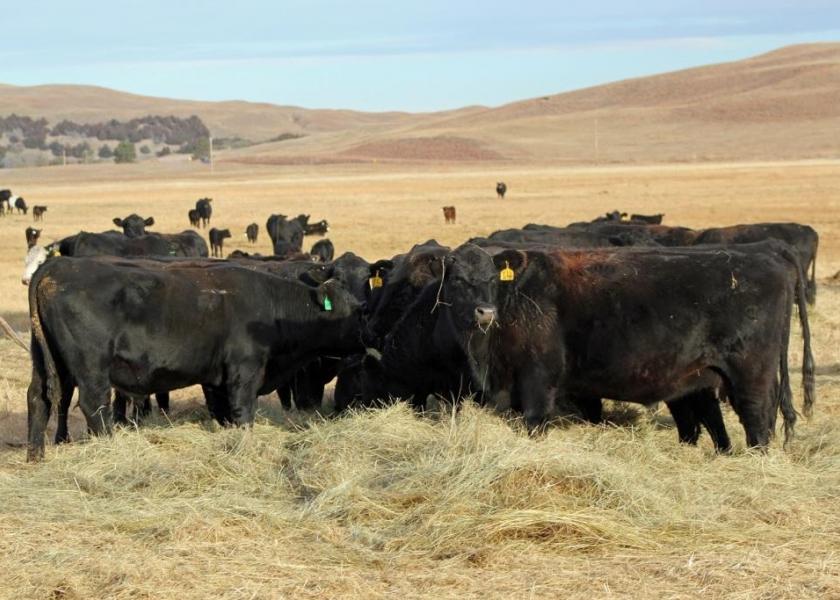Time To Begin Early-Evening Feeding of Spring Calving Cows

Each year in December is time for a reminder to change the feeding schedule for part, if not all of the spring-calving cow herd.
It is generally accepted that adequate supervision at calving has a significant impact on reducing calf mortality. Saving every calf is always important to the bottom line, but takes on additional urgency when profit margins are narrow. On most ranching operations, supervision of the first calf heifers will be best accomplished in daylight hours and the poorest observation takes place in the middle of the night.
The easiest and most practical method of inhibiting nighttime calving at present is by feeding cows at night; the physiological mechanism is unknown, but some hormonal effect may be involved. Rumen motility studies indicate the frequency of rumen contractions falls a few hours before parturition. Intraruminal pressure begins to fall in the last 2 weeks of gestation, with a more rapid decline during calving. It has been suggested that night feeding causes intraruminal pressures to rise at night and decline in the daytime.
The concept is called the Konefal method. A Canadian rancher, Gus Konefal reported his observations in the 1970’s. In a follow-up Canadian study of 104 Hereford cows, 38.4% of a group fed at 8:00 am and again at 3:00 pm delivered calves during the day, whereas 79.6% of a group fed at 11:00 am and 9:00 pm actually calved during daylight hours. In a more convincing study, 1331 cows on 15 farms in Iowa were fed once daily at dusk, 85% of the calves were born between 6:00 am and 6:00 pm.
Kansas State University scientists recorded data on 5 consecutive years in a herd of spring calving crossbred cows at the Kansas State University Agricultural Research Center at Hays, Kansas. They recorded the time of calving (to within the nearest one-half hour). Births that could not be estimated within an hour of occurrence were excluded. Cows were fed forage sorghum hay daily between 4:00 and 6:00 pm. For statistical purposes, the day was divided into four-hour periods.
|
Between 6:00 and 10:00 am, 34.23% of the calves were born; |
|
Between 10:00 am and 2:00 pm, 21.23% of the calves were born; |
|
Between 2:00 and 6:00 pm 29.83% of the calves were born; |
|
Between 6:00 and 10:00 pm, 8.41% of the calves were born |
|
Between 10:00 pm and 2:00 am, 4.4% of the calves were born |
|
Between 2:00 am and 6 am, 1.91% of the calves were born |
It is interesting to note that 85.28% of the calves were born between 6:00 am. and 6:00 pm. This is very similar to Iowa data when cows were fed at dusk. Feeding the forage in the early evening hours undoubtedly influenced the percentage of cows calving in daylight hours. (Jaeger and co-workers. Abstracts 2002 Western Section of American Society of Animal Science.)
At Oklahoma State University, with cows that had round-the-clock access to big round bales, but the supplement was fed at dusk, 70% of the calves came in daylight hours. Some producers choose to put the big bales of hay inside a fenced pasture or lot. The gate to the hay area is opened in the evening to allow cows access to the hay bale(s), then the cows are herded out of haying area to another pasture the following morning to graze throughout the day.
Although, the Konefal method does not let us completely skip the middle of the night heifer checks, this strategy should help us save more calves that need help at delivery and shortly thereafter.







